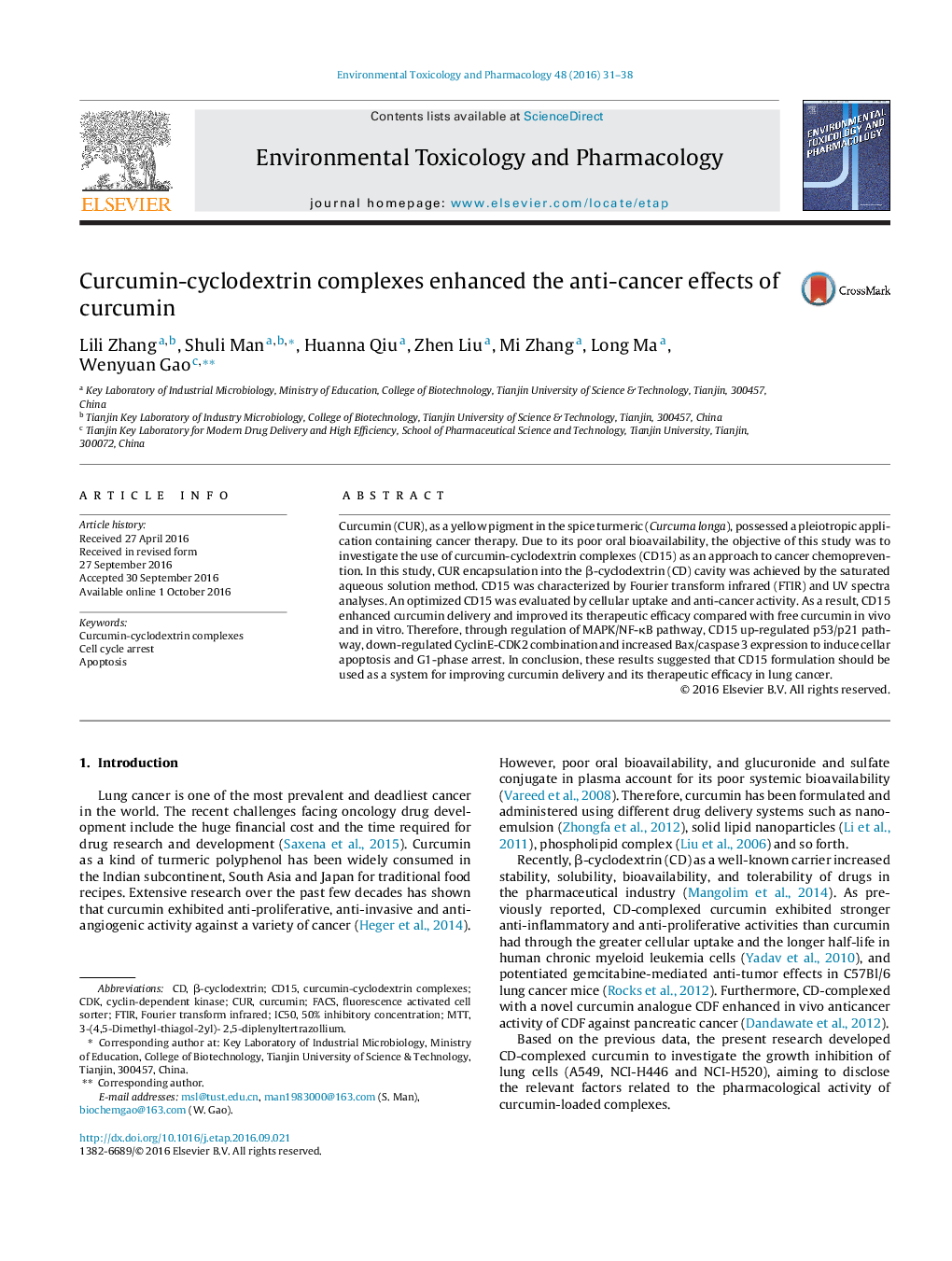| Article ID | Journal | Published Year | Pages | File Type |
|---|---|---|---|---|
| 5559895 | Environmental Toxicology and Pharmacology | 2016 | 8 Pages |
â¢Curcumin-cyclodextrin complexes enhanced cytotoxicity of curcumin in cancer cells.â¢Complexes promoted the intracellular uptake and anti-cancer activity of curcumin.â¢Through the MAPK/NF-κB pathway, complexes promoted cancer cell apoptosis.
Curcumin (CUR), as a yellow pigment in the spice turmeric (Curcuma longa), possessed a pleiotropic application containing cancer therapy. Due to its poor oral bioavailability, the objective of this study was to investigate the use of curcumin-cyclodextrin complexes (CD15) as an approach to cancer chemoprevention. In this study, CUR encapsulation into the β-cyclodextrin (CD) cavity was achieved by the saturated aqueous solution method. CD15 was characterized by Fourier transform infrared (FTIR) and UV spectra analyses. An optimized CD15 was evaluated by cellular uptake and anti-cancer activity. As a result, CD15 enhanced curcumin delivery and improved its therapeutic efficacy compared with free curcumin in vivo and in vitro. Therefore, through regulation of MAPK/NF-κB pathway, CD15 up-regulated p53/p21 pathway, down-regulated CyclinE-CDK2 combination and increased Bax/caspase 3 expression to induce cellar apoptosis and G1-phase arrest. In conclusion, these results suggested that CD15 formulation should be used as a system for improving curcumin delivery and its therapeutic efficacy in lung cancer.
Graphical abstractDownload high-res image (100KB)Download full-size image
